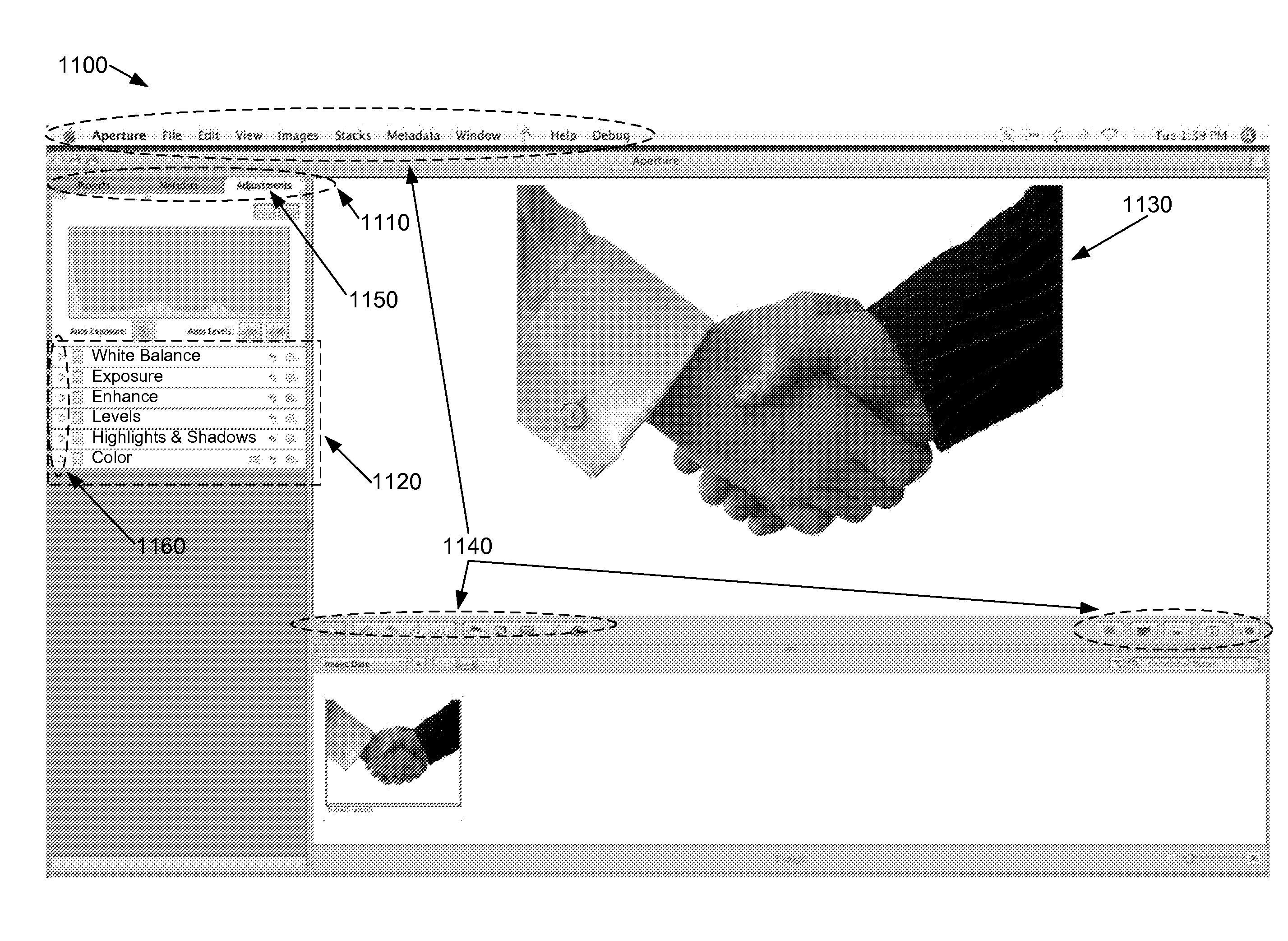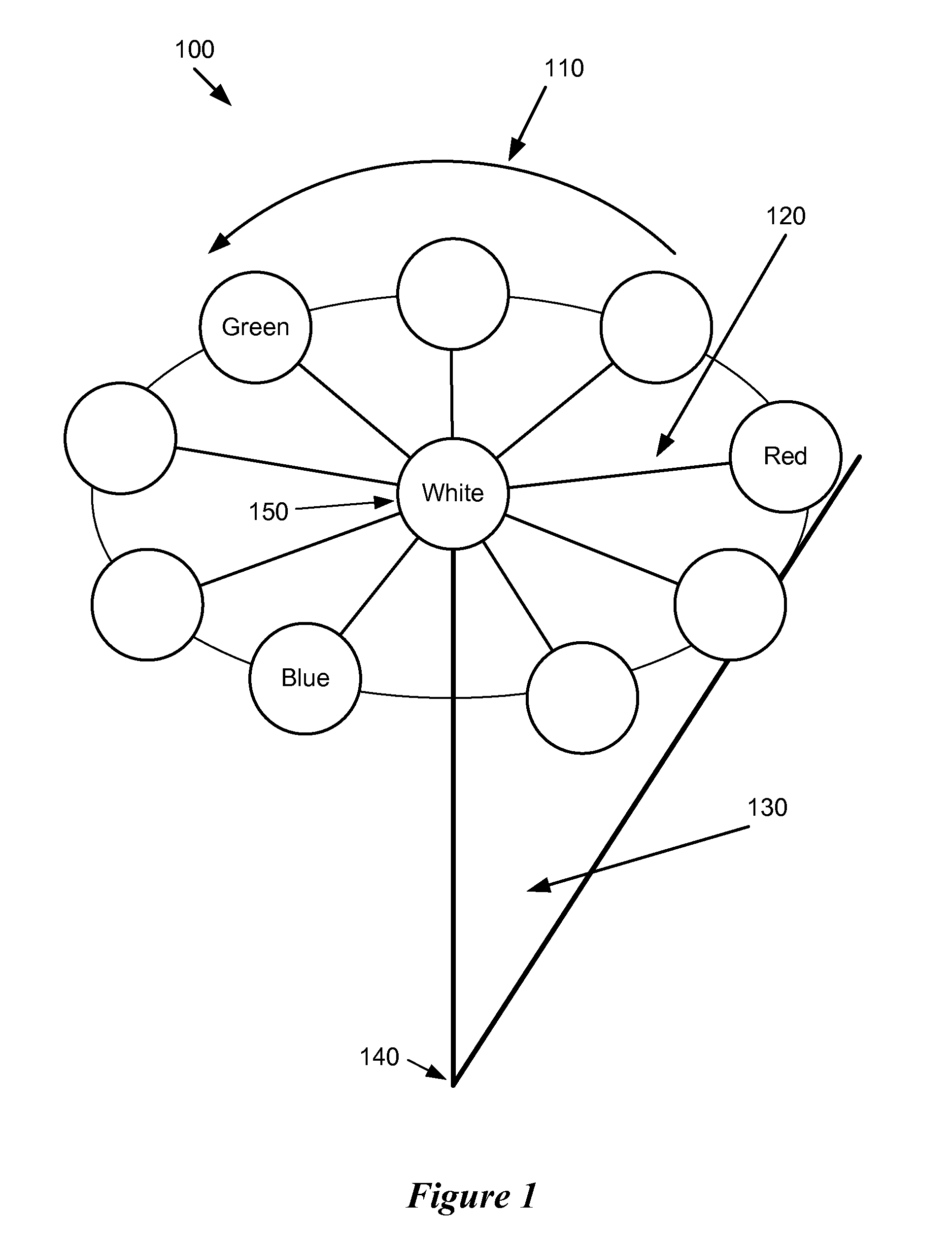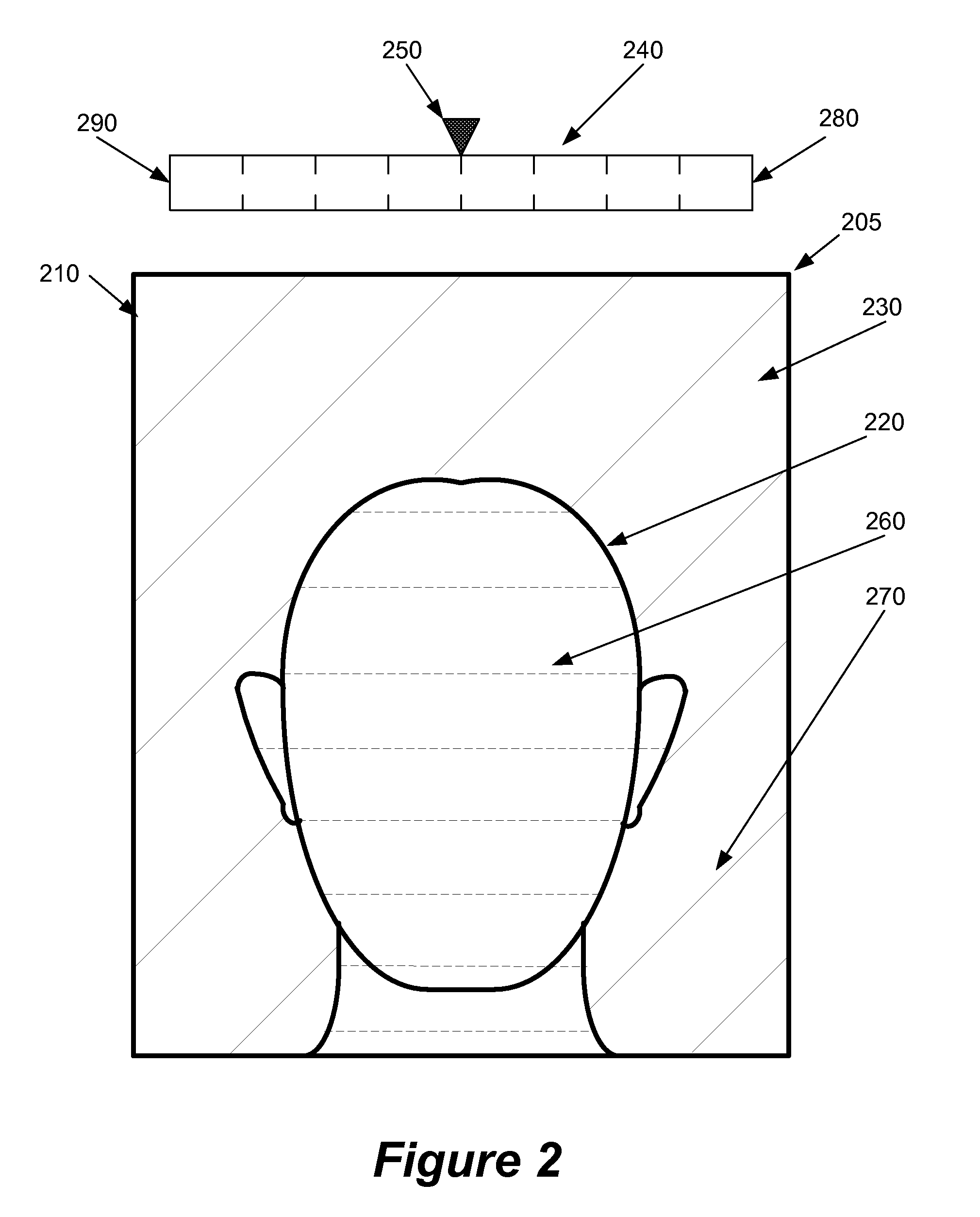Adjusting color attribute of an image in a non-uniform way
a color attribute and image technology, applied in the field of image editing, can solve the problem of non-uniform adjustment of color attributes, and achieve the effect of less adjustment to the saturation level of pixels and preserving skin tones
- Summary
- Abstract
- Description
- Claims
- Application Information
AI Technical Summary
Benefits of technology
Problems solved by technology
Method used
Image
Examples
Embodiment Construction
[0032]In the following description, numerous details are set forth for purpose of explanation. However, one of ordinary skill in the art will realize that the invention may be practiced without the use of these specific details. For instance, the same techniques described below are applicable to various other image editing functions besides image saturation (i.e., hue, contrast, etc.).
I. Overview
[0033]Some embodiments of the invention provide an image-editing process that non-uniformly adjusts at least one particular color attribute (e.g., saturation level) of pixels in an image. Specifically, the image-editing process of these embodiments uniformly adjusts the particular color attribute of pixels with a first set of values that fall outside a sub-region of a color space and non-uniformly adjusts the color attribute of pixels with a second set of values that fall within the sub-region of the color space. In this manner, the process adjusts the particular color attribute of a first s...
PUM
 Login to View More
Login to View More Abstract
Description
Claims
Application Information
 Login to View More
Login to View More - R&D
- Intellectual Property
- Life Sciences
- Materials
- Tech Scout
- Unparalleled Data Quality
- Higher Quality Content
- 60% Fewer Hallucinations
Browse by: Latest US Patents, China's latest patents, Technical Efficacy Thesaurus, Application Domain, Technology Topic, Popular Technical Reports.
© 2025 PatSnap. All rights reserved.Legal|Privacy policy|Modern Slavery Act Transparency Statement|Sitemap|About US| Contact US: help@patsnap.com



